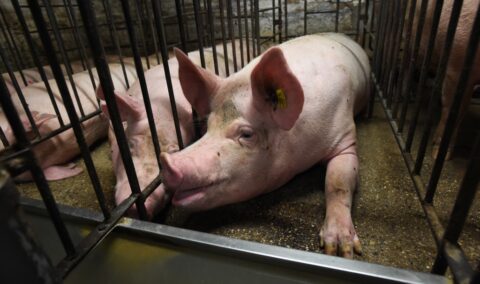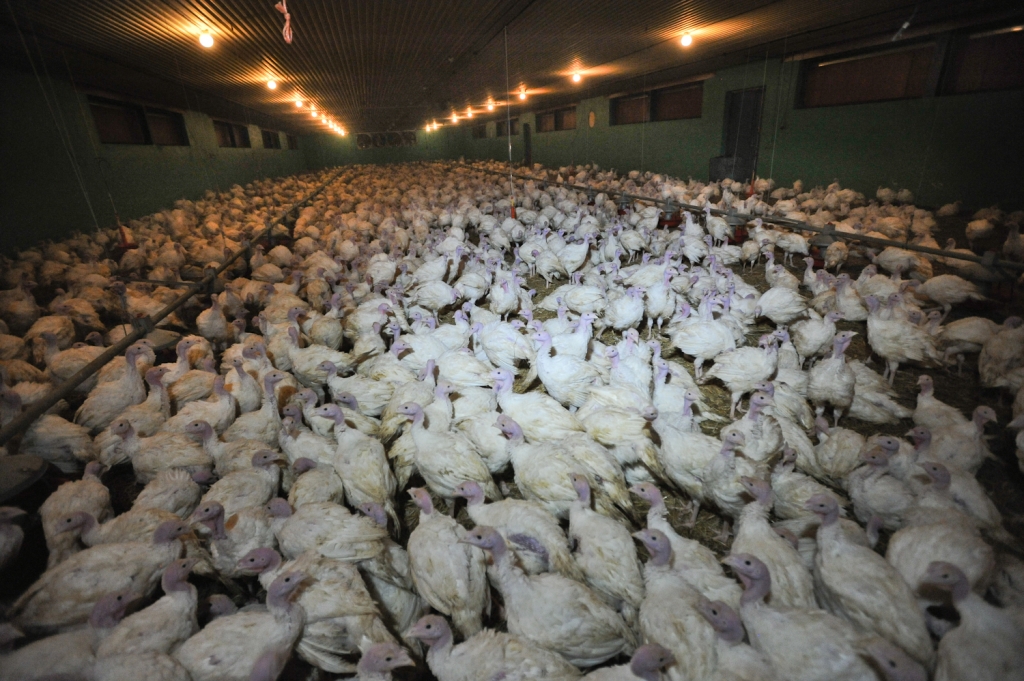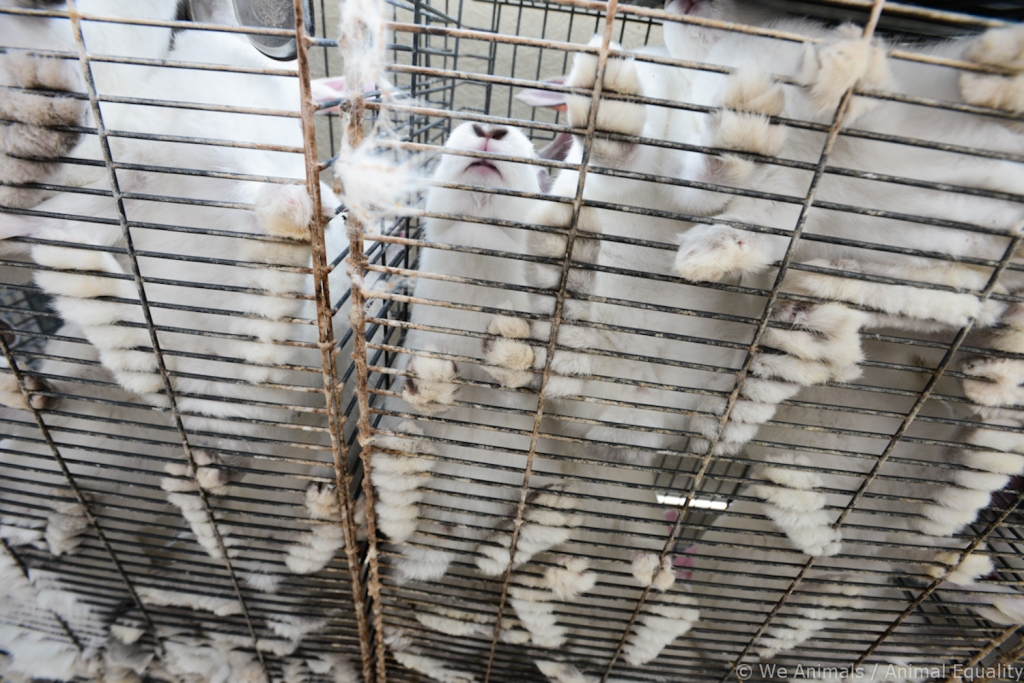Reported
Beagles Are Bred by the Thousands on Factory Farms, and It’s Perfectly Legal
Justice•4 min read
Perspective
The end goal should always be a world where humans and animals co-exist peacefully. And if that means animal rights activists and animal welfare proponents co-existing peacefully in the meantime, then we will get there even faster.


Words by Grant Lingel
Animal welfare and animal rights are often confused. Most people aren’t sure if there is a difference between the two or if they are the same thing.
Animal rights and animal welfare are two different philosophies and cater to different people with different mindsets. However, there are ways for them to work together to achieve the same goals.
And this is where things can get complicated.
Before getting into why certain aspects of animal welfare can positively contribute to the end goals of animal rights activists, let’s first discuss what animal welfare is and how it is different from animal rights.
Animal welfare covers the responsibilities that humans have when it comes to the treatment of animals in captivity.
There are many different situations where animals are held in captivity by people. From farms raising animals for food and zoos to laboratories that run animal testing and circuses, the range of different situations where animals are captive is vast and shocking.
Animal welfare refers to the responsibility that humans have when it comes to the treatment of these animals. That can include how they are housed, how they’re handled, the management of their lives and living situations, their medical status and treatment, and their well-being in general.
All of these issues are important for the overall well-being of these captive animals.
But here lies the issues within the animal rights movement: Animals are not supposed to be captive and used for human consumption or entertainment.

Animal rights activists have a specific end goal in mind. They believe that humans do not have the right to use animals for food, entertainment, testing, or anything in between.
Animal welfare proponents believe that animals should be treated humanely during captivity but don’t necessarily believe they shouldn’t be used by humans for specific things.
There is some gray area while the size and depth of that area will vary from person to person.
While some animal welfare theories suggest that humans can use animals for consumption or entertainment as long as they’re treated humanely, there are many people who support the humane treatment of animals even though they don’t believe animals should be used by humans.
Now let’s make this clear. It is possible for someone from one side to support the other side and vice-versa. The world isn’t perfect and logical thinkers with their hearts in the right place will understand that.
Of course, there are plenty of people that don’t allow any wiggle room in their stance when it comes to animal rights or animal welfare issues.
There are animal rights activists that are against animal welfare issues because they believe with full conviction that animals should not be used at all by people for anything. And there are animal welfare proponents that do not think animals deserve the same rights as people and that their use by humans as food or entertainment is fine as long as they are treated humanely.
Can the staunch attitude of an animal rights activist actually hurt their cause to begin with? Can animal welfare proponents hurt more animals than they help by saying it’s okay to use animals and perpetuating the cycle of torture and suffering of sentient beings?
This will be discussed shortly. First, let’s understand a little more about animal welfare in general.
To gain a better understanding of animal welfare, it’s important to take a look at the guidelines that were officially set back in 1979.
The 5 freedoms of animal welfare were first published in the United Kingdom in response to a 1965 government report on livestock husbandry.
The idea behind this is that animals in captivity have the right to food and water.
This is a basic right that all living creatures should be granted.
What makes this complicated, however, is that many animals in captivity do not eat what they are meant to eat.
Let’s look at factory-farmed animals, for example. Cows are not meant to eat soy or corn. They are designed by nature to eat grasses. That is how their systems are built.
They also aren’t meant to drink water that is loaded with antibiotics and medicines to keep them from getting sick because of their confined and overcrowded living quarters.
While this freedom seems good on paper, no freedom can be granted to animals that aren’t actually free. This is a common argument when it comes to debating animal welfare advocates that don’t push for animal rights instead.
Using the factory farm example again, it will be easy to see that there is no such thing as comfort for livestock raised by the industrial food complex.
When it comes to animal welfare, there is such a thing as improving conditions. These improvements should be cheered as steps in the right direction but should never be considered the end goal.
For poultry farming, people who push animal welfare measures might fight hard for larger cages or cage-free farms. While cage-free is, in fact, better than being contained to a tiny cage, the result can lead to disingenuous marketing and the conditioning of people to believe they are consuming humane products.
This, in reality, is dangerous as it sets a precedent that tens of thousands of chickens packed into a CAFO is a good thing while tens of thousands of birds in cages is a bad thing. They are both bad. Is one better than the other? Both sides of the argument can bring up valid points.
Animal welfare advocates and organizations work diligently to take the steps needed to bring more comfort and better living conditions to animals. This should be applauded. However, additional comfort should never be the end goal.
The only true humane situation would be to abolish the practice in the first place and grant the animals the rights they deserve.
Farms that push for animal welfare typically do so in order to make their farms more efficient and profitable.
It’s difficult to argue that a pig farmer cares about the actual well-being of a pig if their slaughter is imminent.
Animal welfare advocates, on the other hand, do care about the treatment of the animals on these farms. These advocates typically don’t have money on the line like farmers or large companies that want to protect their image. If a food company is discovered to mistreat the animals they turn into food, it is bad for their brand.

This is a very difficult thing to achieve in captivity.
There is nothing natural about a factory farm or a lab where animal testing is happening. These are artificial environments designed to produce fast results and efficient businesses.
It’s naive to say that a pig will be able to express normal behavior spending most of her life in a gestational crate. The same can be said of a rat living in a cage while having different creams and lotions tested on his skin.
This is one of the freedoms of animal welfare that contrasts the most with the mindset of animal rights activists.
Animal rights activists believe that humans should not be using animals at all. They believe all animals should be free and have the same basic rights to freedom and liberty as humans.
So how is that possible for any farmed animal or animal in a zoo? It isn’t.
And while places like zoos try to replicate natural environments for some of the animals, it’s a tough sell for anyone truly looking out for the well-being of an animal to expect an African elephant to live a natural life in a small enclosure in a cold environment in Canada, for example.
This is another tough sell to animal rights activists and another freedom that shows how different animal welfare is from animal rights.
In a perfect world, animals would not have to live in any kind of forced fear. While fear occurs naturally in the wild for all animals, the fear animals feel on their way to a slaughterhouse, for example, is far from natural.
Animal welfare advocates will push for comfortable living conditions and more humane types of transport for factory-farmed animals but the end result will still be the same.
It’s dangerous to think that there is any way to truly provide a stress-free environment on a factory farm. There might be some measures that can be taken to make the experience a little better for the animals but to think that fear or stress can be eliminated completely is unrealistic.
Any living situation that has tens of thousands of animals sharing the same space while consuming unnatural diets in unnatural environments will lead to stress.
Any situation where animals are purposely bred to then have their babies taken away from them almost immediately will lead to fear.
Evolution and nature instill these emotions in animals and challenging nature by forcing animals to live in unnatural environments will automatically induce these kinds of emotions.
Animal welfare exists because we live in an imperfect world for non-human animals.
For as long as humanity has existed, humans have used animals as tools. From horses for transportation to dogs as companions and everything in between.
And while the human use of animals many years ago was mainly used for survival, that time has come and gone.
The use of animals for food, protection, transport, and beyond are no longer needed for survival. However, there are huge markets for animal products and endless money invested in making people think they still need animal products in today’s day and age.
Marketing in the food industry tells people that they need animal protein, something that simply is not true. Marketing in the automobile and fashion industries tell people they need leather, something else that is simply not true.
And while we are seeing the downfall of circuses and animal-themed parks, they still exist and attract large numbers of support and visitors.
With all of that said, billions of animals are still held in captivity and slaughtered every year for human use. That means the consumption as food, clothing, and testing for products used by people.
Animal welfare exists because it needs to exist. Major change isn’t going to happen overnight. And while veganism and cruelty-free products are both becoming more popular, the percentage of people following these lifestyles is still a very small minority.
Animal welfare advocates work to improve the lives of animals in captivity. And while many would love to see a world where animals aren’t used as products and tools, they know that isn’t the reality right now.
Like with any movement or cause, there will always be a wide spectrum of beliefs and interpretations by the people fighting for the cause.
If you ask the most ardent animal rights activist if they had to choose whether a layer hen was to spend her life in a tiny cage where she couldn’t move or if they would prefer the hen was cage-free, they would choose the latter.
There is no real question. Coming to this conclusion doesn’t challenge or take away from the activist’s philosophy or the change they would like to see happen in the future.
It is possible for an animal rights activist to support animal welfare for many reasons.
The animals in question already exist and are living in terrible conditions. While the overall fight to end animal farming or testing is being fought in parallel, accepting incremental changes to improve the lives and well-being of animals should be embraced. However, they should never be accepted as a replacement for what the end goal should be.
And this is where the main argument comes in for animal rights activists that are against animal welfare.
Where is the limit? If one believes something is wrong, how can they cheer something that is still wrong, even if just slightly better?
The trolley problem involves a variety of different hypothetical situations where the choice of an individual alters the outcome of an out-of-control train.
The main dilemma has the trolley hurtling down the track toward five people. Without human intervention, the trolley will kill all five people. However, there is a person on the track and can lift a lever and divert the trolley down a second set of tracks. If the person lifts the lever, the trolley will go down the second set of tracks and kill one person. This moral dilemma has been used over and over for countless reasons since it became popular in the 1960s.
The point of the exercise is that there is no perfect, comfortable answer. There is a moral argument for both sides. By doing nothing, you are not exactly influencing any decisions and therefore do not have blame. If you do pull the lever, you save lives but at the cost of directly influencing the loss of another.
Animal welfare is like the trolley problem. You can build a very legitimate case that animal welfare is making a positive impact on the lives of the animals in captivity. However, you can also build a case saying that animal welfare is excusing the behavior of a society that allows for animals to be farmed and used for entertainment in the first place.
This is why it is possible for an animal rights activist to also support animal welfare.
The debate of whether or not animal rights and animal welfare can co-exist has been happening for a while.
There are people on both sides of the debate that present interesting cases.
But the fact of the matter is clear: We do not live in a perfect world and change won’t happen overnight.
If the final goal is to end animal farming or animal testing then animal rights activists need to understand that these things won’t happen without building our way there in a smart, strategic, and unified way.
Fighting people who support animal welfare measures who also have similar goals and beliefs is not going to help the animals. In fact, it will do the opposite.
Continuously educating ourselves on the fight for animal rights and animal liberation is the best way to understand how we will make a difference in the long run.
If that means incremental changes along the way that show corporations that they can’t get away with everything then that is a positive step in the right direction. It will also directly benefit animals at the moment that are suffering and could potentially suffer less from small changes.
Should those small changes be celebrating as victories? Maybe. But they should never be accepted as the end goal.
The end goal should always be a world where humans and animals co-exist peacefully. And if that means animal rights activists and animal welfare proponents co-existing peacefully in the meantime, then we will get there even faster.